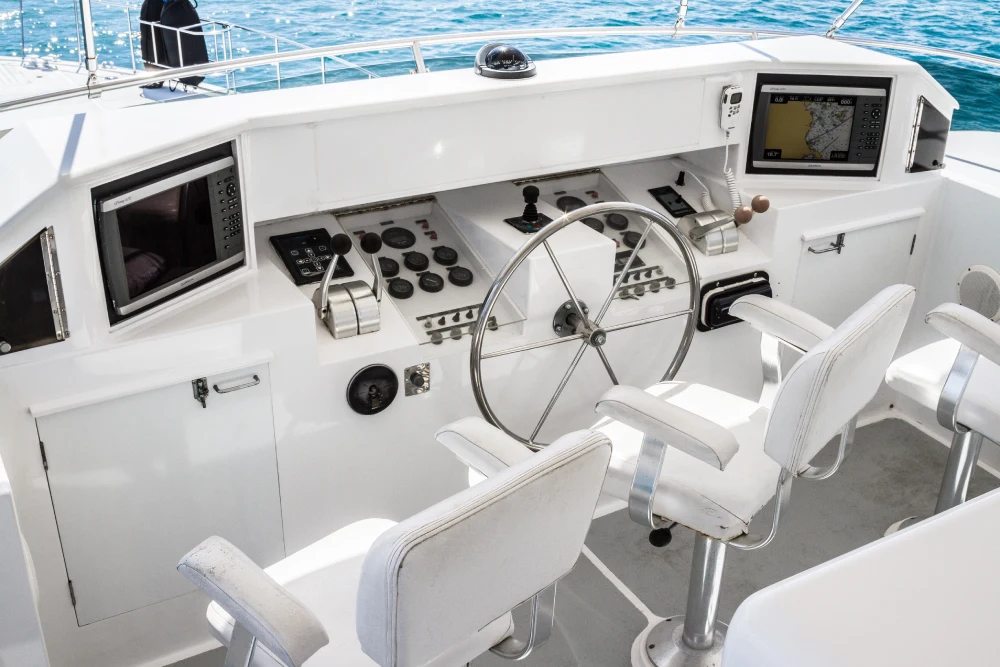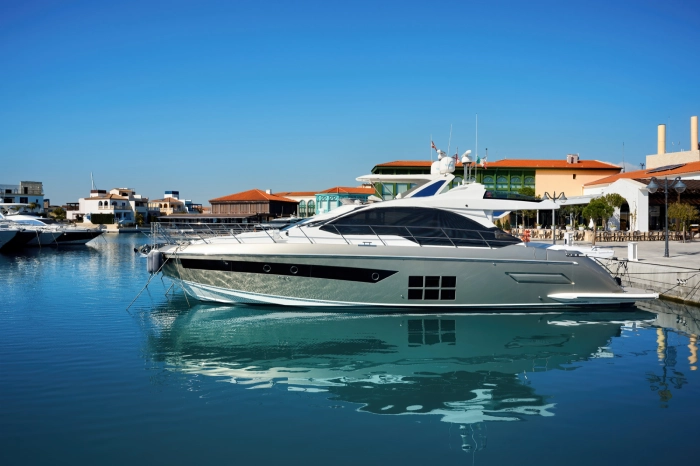Are you a boat owner who wants to ensure the safety of your passengers and yourself while out on the water? Then, it’s crucial that you conduct regular boat safety inspections on your boat. By following an essential boat safety inspection checklist, you can detect any potential issues before they become major problems.
In this article, we’ll provide a comprehensive guide to conducting a thorough boat safety inspection. Whether you’re an experienced sailor or a new explorer, understanding and implementing this checklist will help you confidently navigate the waters, prioritizing the well-being of all on board.
Check the Hull for Damage
Checking the hull for damage is a crucial step in guaranteeing the boat safety inspection and performance of your boat. The hull plays a fundamental role in maintaining the vessel’s structural integrity and keeping it afloat. Here are some key points to remember when doing boat safety inspection and maintaining your boat’s hull:
- Visual Boat Safety Inspection: Regularly doing boat safety inspection for the hull for visible cracks, scratches, dents, and any other signs of damage. These might be caused by collisions, impacts, or even normal wear and tear. Even minor damage can worsen over time, leading to more significant issues.
- Early Detection: Address any identified damage promptly. Small cracks or scratches might not seem like a big deal initially, but they can compromise the hull’s integrity and safety. Addressing issues early can prevent them from escalating into costly and extensive repairs.
- Professional Repairs: Hull repairs should be conducted by professionals with experience in boat repair. They have the expertise to properly assess the damage and perform the required boat maintenance and repairs using appropriate materials and techniques.
- Preventive Maintenance: Regularly clean your boat’s hull to remove dirt, grime, algae, and additional debris that can accumulate on its surface. This not only keeps your boat looking good but also prevents the growth of organisms that can damage the hull.
- Protective Coatings: Consider using protective coatings or sealants designed explicitly for boat hulls. These coatings can help prevent corrosion caused by exposure to water, salt, and other elements. They also make it easier to clean the hull and maintain its appearance.
Remember, the hull is the foundation of your boat, and neglecting its maintenance can lead to serious consequences. By following these guidelines and prioritizing boat safety inspection, you’ll contribute to the safety, performance, and longevity of your boat.
Ensure Proper Functioning of Navigation Lights
Maintaining functioning navigation lights is crucial for boating safety, especially during low visibility conditions or at night. Here’s a detailed breakdown of the steps you can take to ensure the navigation lights on your boat are working correctly:
- Check Wiring Connections: Examine the wiring connections for signs of corrosion, damage, or wear. Corroded or loose connections can lead to flickering lights or even complete failure. If you notice any issues, clean the connections and secure them properly.
- Test Each Light: Turn on each navigation light individually and verify that all lights are illuminating as they should. This includes the red and green sidelights, white stern light, and masthead light.
- Inspect Bulbs: Inspect the bulbs for any signs of burnout or dimness. Even if a bulb partially works, it might not be visible from a distance, leading to potential safety hazards. Replace any bulbs that are not functioning appropriately.
- Clean Lenses: Clean the lenses of the navigation lights regularly to remove dirt, salt buildup, or grime that can obstruct their visibility. Utilize a soft cloth and research about boat cleaning hacks to avoid scratching the lenses.
- Check for Proper Alignment: Ensure the navigation lights are properly aligned according to regulations. Incorrectly aligned lights can create confusion for other boaters and reduce the lights’ effectiveness.
Keep in mind that navigation lights are not just a legal requirement but also a vital safety feature. Performing a regular boat safety inspection ensures that your navigation lights function correctly, further enhancing overall safety during your time on the water.
Inspect the Steering System

Take a moment to ensure that your boat’s steering system is in proper working order. The steering system is crucial for maneuvering your boat safely on the water, so it’s essential to inspect it regularly. Here are some common steering issues to watch out for and the importance of regular steering system maintenance:
- Loose or Worn Out Connections: Check all the connections in your steering system for any signs of looseness or wear. Tighten any loose connections and install new worn-out parts immediately.
- Lubrication: Proper lubrication is vital for smooth and efficient steering operation. Make sure to apply marine-grade grease or oil to all moving parts of the steering system.
- Alignment: Check the alignment of your boat’s outboard motor or sterndrive unit with the rudder or lower unit when inspecting the steering system. Misalignment can cause excessive strain on the components and lead to premature failure.
- Cable Tension: Ensure proper tension in the cables of your boat’s mechanical steering system. Adjust as needed according to manufacturer guidelines.
- Corrosion: Saltwater exposure can cause corrosion in metal components, leading to stiffness or even failure of the steering system. Regularly clean and inspect all metal parts, applying anti-corrosion products as necessary.
Regular maintenance and boat safety inspection of your steering system is vital for ensuring safe navigation on the water. By addressing common issues promptly and keeping up with regular maintenance tasks, you can avoid potential problems and enjoy a trouble-free boating experience. Remember, a well-maintained steering system enhances overall boat safety inspection and control while enjoying your time on the water.
Verify the Condition of Life Jackets and Safety Equipment
Verifying the condition of life jackets and safety equipment is essential to ensure their effectiveness during emergencies. Here’s a step-by-step guide on how to verify the condition of these items:
- Life Jackets: Thoroughly examine each life jacket, meticulously scrutinizing for any indications of wear, like frayed straps, fabric tears, or broken buckles. Immediate replacement of compromised jackets is essential to ensure they deliver proper buoyancy in potential emergencies.
- Fire Extinguishers: Conduct a comprehensive assessment of fire extinguishers, confirming they are both fully charged and non-expired, thus guaranteeing their functional readiness in the event of a fire onboard.
- First Aid Kit: Thoroughly inspect the first aid kit, meticulously verifying the presence and currency of all supplies. This step ensures the kit’s efficacy in addressing medical situations.
- Signaling Devices: Carefully verify signaling devices such as flares and distress flags, confirming they are within their expiration date and are appropriately stored, ensuring their reliability when needed.
- Maintenance: Adopt maintenance practices such as storing life jackets and safety equipment in a dry location, away from direct sunlight, to counteract potential deterioration arising from prolonged exposure to harsh elements.
By following these steps and conducting a thorough boat safety inspection, you can ensure that your life jackets and safety equipment are in proper working condition, contributing to the safety of yourself and others during boating activities.
Test the Emergency Communication Devices
Testing emergency communication devices is one of the critical steps in boat safety inspection to ensure your safety while at sea. Here’s a step-by-step guide on how to effectively test these devices:
- Review Protocols: Begin by thoroughly understanding the emergency communication protocols tailored to your boat. This knowledge lays the foundation for proper device usage during critical moments.
- Device Proficiency: Gain familiarity with the operation of each device. Equip yourself with the skills needed to navigate marine radios, satellite phones, and personal locator beacons (PLBs) effectively.
- Distress Signal Check: Validate the operational integrity of your emergency devices. Ensure marine radios and satellite phones are not only charged but also in optimal working condition. Activate the radio and validate its seamless transmission and reception capabilities.
- PLB Functionality: Test the PLB’s performance by activating it within a controlled environment. Verify that it successfully emits a distress signal, promptly alerting rescue authorities to your situation.
- Mock Distress Simulation: Conduct a practice run of a mock distress call. This hands-on exercise enhances your familiarity with device operations and empowers you to gauge their responsiveness in realistic scenarios.
- Crew Competence: Assure all crew members are well-versed in operating the communication devices. Their proficiency in correct and efficient device utilization is integral to a coordinated response.
By rigorously testing your emergency communication devices, you proactively equip yourself with the means to manage unforeseen emergencies at sea. The assurance of dependable communication for seeking help underscores the safety of all individuals on board.
Final Thoughts on Boat Safety Inspection
Prioritizing boat safety inspection and the well-being of passengers is paramount. Adhering to this vital checklist significantly reduces accident risks, ensuring a smooth and secure boating experience. Thoroughly assess the hull for damage, maintain operational navigation lights, and examine the steering system. Confirm the accessibility and condition of life jackets and emergency gear. Regularly test communication devices for swift assistance. Embrace this comprehensive safety protocol to safeguard yourself, your passengers, and the vessel during water activities.
At the Boat Concierge, we prioritize your safety on the water. Contact us today for expert boat safety inspection and maintenance services. Let us help you maintain a seaworthy vessel, ensuring your boating experiences are worry-free.



